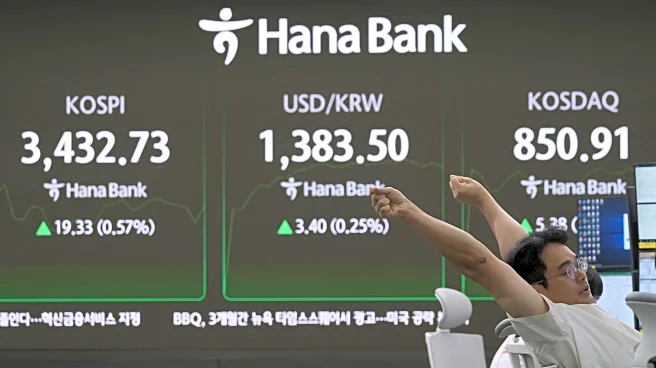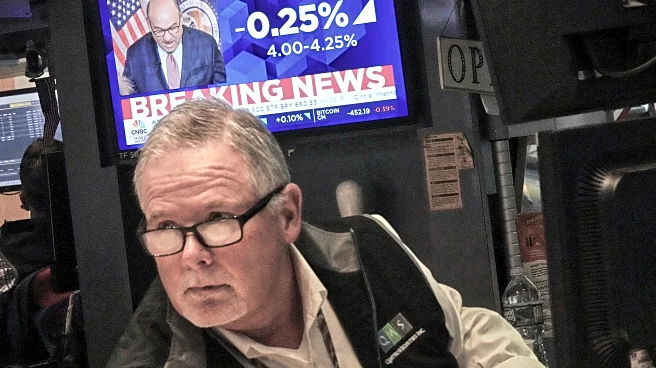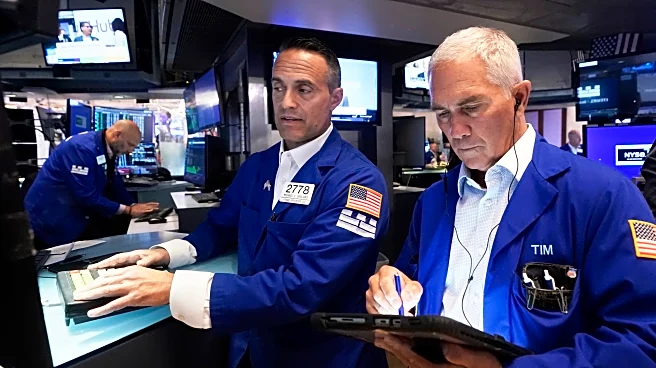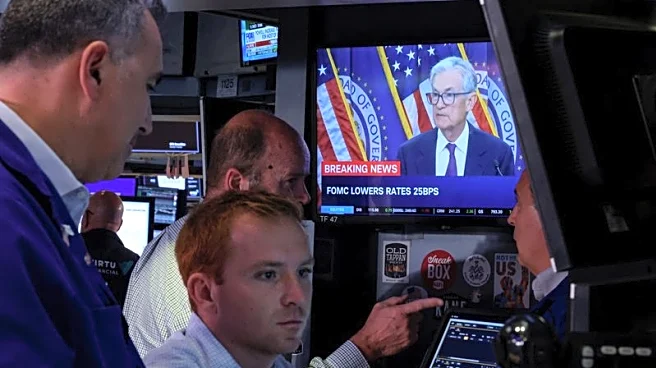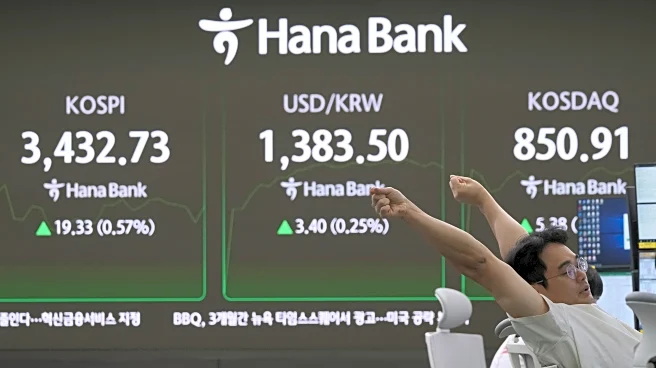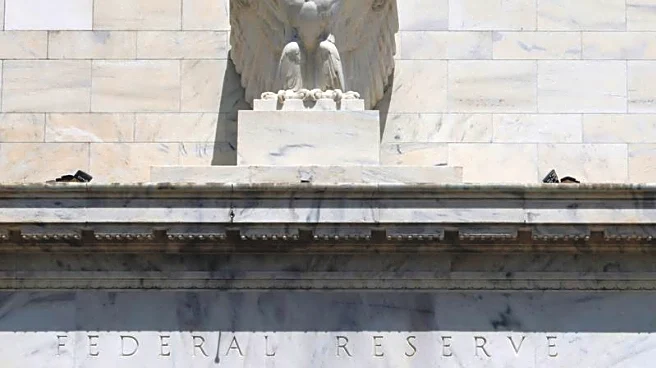What's Happening?
The U.S. dollar experienced significant fluctuations following the Federal Reserve's recent decision to cut interest rates by a quarter point. This move, described by Fed Chair Jerome Powell as a 'risk-management cut,' was made in response to a weakening labor market. The decision led to a drop in the dollar to its lowest level since February 2022, before it rebounded to gain as much as 0.44% on the day. Analysts are divided on the implications of the Fed's actions, with some viewing it as the beginning of a series of cuts, while others interpret the Fed's stance as cautious and not overly dovish. The Bank of England's decision to maintain its interest rates and slow its bond sales also influenced currency movements, with the British pound initially rising before stabilizing.
Why It's Important?
The Federal Reserve's interest rate decisions are crucial for the U.S. economy as they influence borrowing costs for consumers and businesses, impacting economic growth and inflation. The recent rate cut reflects the Fed's attempt to manage economic risks amid a weakening labor market. The dollar's volatility following the decision highlights the uncertainty in financial markets and the global economy's interconnectedness. A stronger or weaker dollar can affect U.S. exports and imports, influencing trade balances and economic health. The Fed's actions also set expectations for future monetary policy, affecting investor confidence and market stability.
What's Next?
The Federal Reserve's future actions will be closely monitored by investors and economists, as further rate cuts could signal a more aggressive approach to stimulating the economy. The Fed's next steps will depend on economic indicators such as employment data and inflation rates. Additionally, the Bank of England's monetary policy decisions will continue to impact currency markets, particularly the pound and the euro. Market participants will also watch for developments from other central banks, such as the Bank of Japan, which could influence global financial conditions.

